Journal Articles Published
Check Google Scholar for more information and the up-to-date list.
2024
-
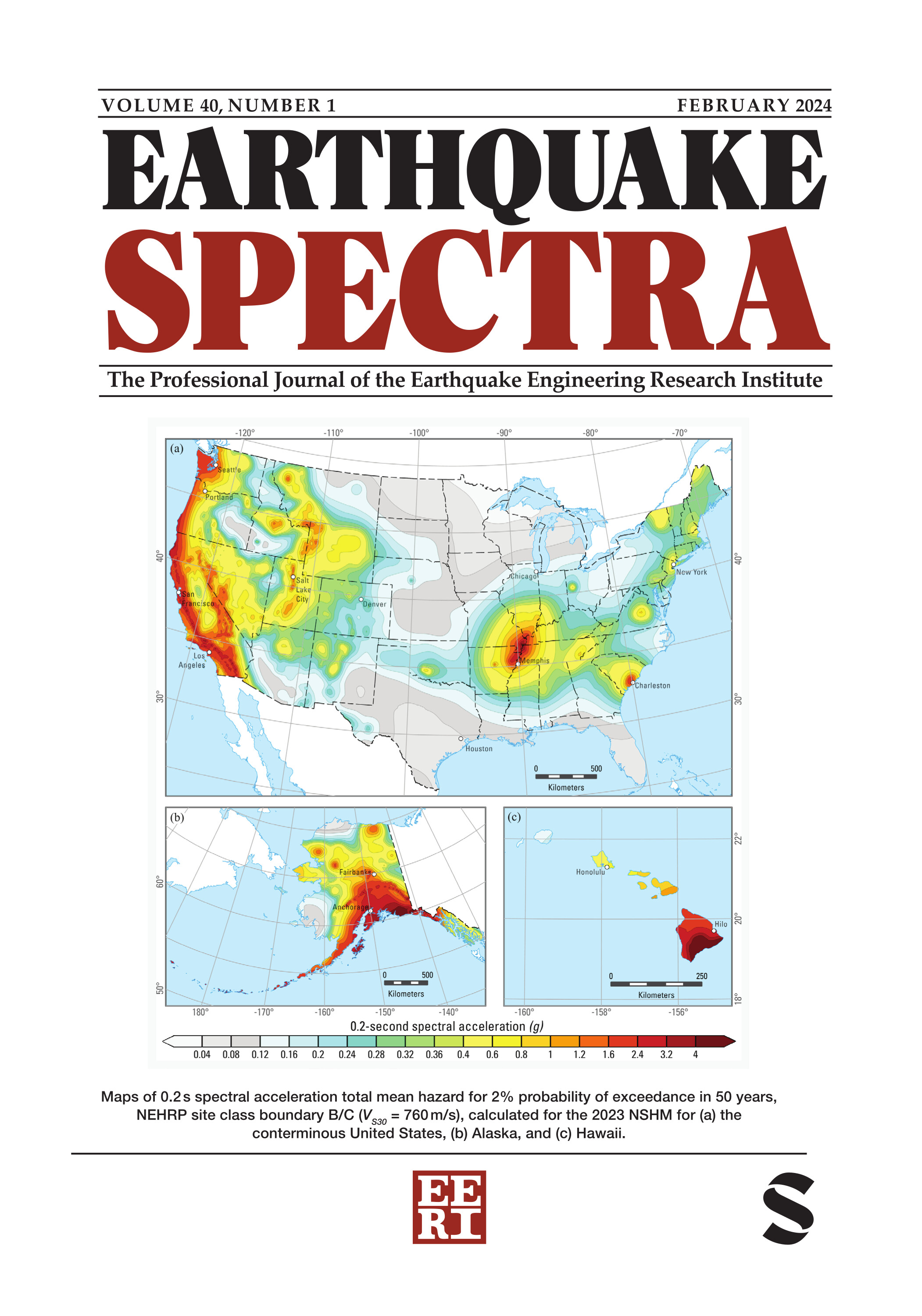 Fragility modeling practices and their implications on risk and resilience analysis: From the structure to the network scaleRaul Rincon and Jamie Ellen PadgettEarthquake Spectra, Jan 2024Publisher: SAGE Publications Ltd STM
Fragility modeling practices and their implications on risk and resilience analysis: From the structure to the network scaleRaul Rincon and Jamie Ellen PadgettEarthquake Spectra, Jan 2024Publisher: SAGE Publications Ltd STMAlthough fragility function development for structures is a mature field, it has recently thrived on new algorithms propelled by machine learning (ML) methods along with heightened emphasis on functions tailored for community- to regional-scale application. This article seeks to critically assess the implications of adopting alternative traditional and emerging fragility modeling practices within seismic risk and resilience quantification to guide future analyses that span from the structure to infrastructure network scale. For example, this article probes the similarities and differences in traditional and ML techniques for demand modeling, discusses the shift from one-parameter to multiparameter fragility models, and assesses the variations in fragility outcomes via statistical distance concepts. Moreover, the previously unexplored influence of these practices on a range of performance measures (e.g. conditional probability of damage, risk of losses to individual structures, portfolio risks, and network recovery trajectories) is systematically evaluated via the posed statistical distance metrics. To this end, case studies using bridges and transportation networks are leveraged to systematically test the implications of alternative seismic fragility modeling practices. The results show that, contrary to the classically adopted archetype fragilities, parameterized ML-based models achieve similar results on individual risk metrics compared to structure-specific fragilities, promising to improve portfolio fragility definitions, deliver satisfactory risk and resilience outcomes at different scales, and pinpoint structures whose poor performance extends to the global network resilience estimates. Using flexible fragility models to depict heterogeneous portfolios is expected to support dynamic decisions that may take place at different scales, space, and time, throughout infrastructure systems.
-
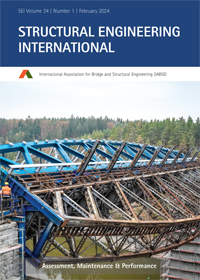 Seismic Resilience of Interdependent Built Environment for Integrating Structural Health MonitoringNisrine Makhoul, Milad Roohi, J.W. Lindt, Luís Oliveira Santos, Sotiris Argyroudis, and 15 more authorsFeb 2024
Seismic Resilience of Interdependent Built Environment for Integrating Structural Health MonitoringNisrine Makhoul, Milad Roohi, J.W. Lindt, Luís Oliveira Santos, Sotiris Argyroudis, and 15 more authorsFeb 2024The functionality of interdependent infrastructure and resilience to seismic hazards has become a topic of importance across the world. The ability to optimize an engineered solution and support informed decision-making is highly dependent on the availability of comprehensive datasets and requires substantial effort to ingest into community-scale models. In this article, a comprehensive seismic resilience modeling methodology is developed, with detailed multi-disciplinary datasets, and is explored using the state-of-thescience algorithms within the interdependent networked community resilience modeling environment (IN-CORE). The methodology includes a six-step chained/linked process consists of: (a) community data and information, (b) spatial seismic hazard analysis using next-generation attenuation, (c) interdependent community model development, (d) physical damage and functionality analysis, (e) socio-economic impact analysis and (f) structural health monitoring (SHM) and emerging technologies (ET). An illustrative case study is presented to demonstrate the seismic functionality and resilience assessment of Shelby County in Memphis, Tennessee, in the United States. From the discussion of results, it is then concluded that data from structural health monitoring and emerging technologies is a viable approach to enhance characterising the seismic hazard resilience of infrastructure, enabling rapid and in-depth understanding of structural behaviour in emergency situations. Moreover, considering the momentum of the digitalization era, setting an holistic framework on resilience that includes SHM and ET will allow reducing uncertainties that are still a challenge to quantify and propagate, supported by sequential updating techniques from Bayesian statistics.
-
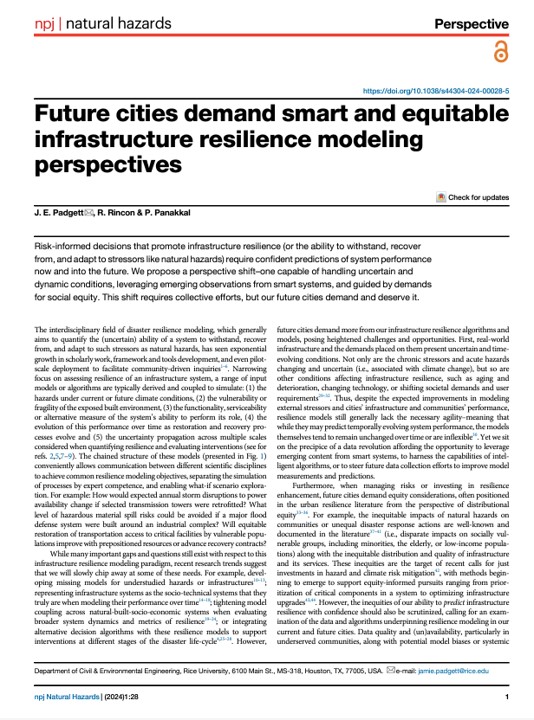 Future cities demand smart and equitable infrastructure resilience modeling perspectivesJ. E. Padgett, R. Rincon, and P. Panakkalnpj Natural Hazards, Nov 2024
Future cities demand smart and equitable infrastructure resilience modeling perspectivesJ. E. Padgett, R. Rincon, and P. Panakkalnpj Natural Hazards, Nov 2024Risk-informed decisions that promote infrastructure resilience (or the ability to withstand, recover from, and adapt to stressors like natural hazards) require confident predictions of system performance now and into the future. We propose a perspective shift–one capable of handling uncertain and dynamic conditions, leveraging emerging observations from smart systems, and guided by demands for social equity. This shift requires collective efforts, but our future cities demand and deserve it.
2023
-
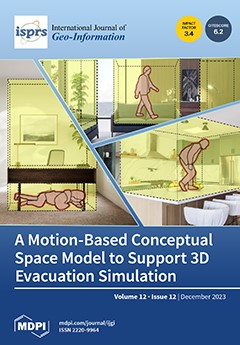 Quick Estimation Model for Mapping Earthquake Impacts in Bogotá, ColombiaHiroyuki Miura, Masashi Matsuoka, Juan C. Reyes, Nelson Pulido, Mitsufumi Hashimoto, and 5 more authorsISPRS International Journal of Geo-Information, Dec 2023Number: 12 Publisher: Multidisciplinary Digital Publishing Institute
Quick Estimation Model for Mapping Earthquake Impacts in Bogotá, ColombiaHiroyuki Miura, Masashi Matsuoka, Juan C. Reyes, Nelson Pulido, Mitsufumi Hashimoto, and 5 more authorsISPRS International Journal of Geo-Information, Dec 2023Number: 12 Publisher: Multidisciplinary Digital Publishing InstituteEarly disaster responses in damaged areas after a large earthquake are indispensable for stakeholders to assess and grasp the impacts such as building and infrastructure damage and disrupted community functionality as soon as possible. This study introduces a quick estimation model for mapping seismic intensities and building losses in Bogotá, the capital city of Colombia. The model uses ground motion records in the seismic network, soil maps of average shear-wave velocity in the upper 30 m (Vs30) with site amplifications, building inventory, and vulnerability functions for all building types. The spatial distribution of ground motion intensities, including spectral accelerations, was estimated by interpolating the observed seismic intensities with the Vs30-based site amplifications. The losses (repair cost) for all the buildings were evaluated by integrating the estimated spectral accelerations, the building inventory, and the vulnerability functions. The spatial distributions of seismic intensities and building losses can be computed within a few minutes immediately after triggering earthquake motions in the seismic network. The proposed model demonstrates evaluations of the impacts for the Mw6.0 earthquake that occurred on December 2019 and an earthquake scenario with Mw7.0 from an active fault near the Bogotá region.
2022
-
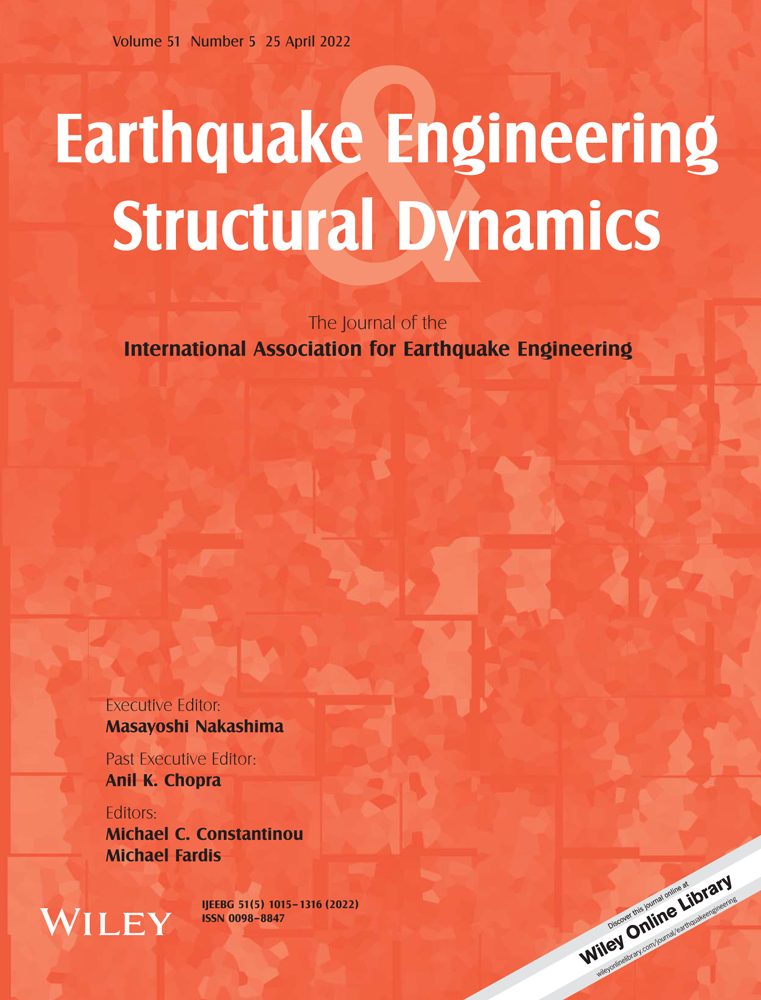 Empirical fragility assessment of adobe and rammed earth walls subjected to seismic actionsRaul Rincon, Juan C. Reyes, Julian Carrillo, and Alejandra Clavijo-TocasuchylEarthquake Engineering & Structural Dynamics, Dec 2022_eprint: https://onlinelibrary.wiley.com/doi/pdf/10.1002/eqe.3608
Empirical fragility assessment of adobe and rammed earth walls subjected to seismic actionsRaul Rincon, Juan C. Reyes, Julian Carrillo, and Alejandra Clavijo-TocasuchylEarthquake Engineering & Structural Dynamics, Dec 2022_eprint: https://onlinelibrary.wiley.com/doi/pdf/10.1002/eqe.3608In many Latin American countries, most constructions from the colonial period were built in earth masonry. During past earthquakes, some of these buildings collapsed even with moderate magnitude events resulting in significant loss of human lives. Nevertheless, empirical fragility functions at the component level (FFs) for these structures have not been comprehensively investigated in the literature. This paper presents the probabilistic characterization of the uncertain damage sustained by earthen vertical wall segments subjected to seismic actions. Drift-based FFs are constructed for in-plane (IP) actions using 48 test results from previous studies. Three damage states, corresponding to cracking, extensive cracking, and collapse, are proposed for this loading direction. Only the collapse state is analyzed for out-of-plane (OOP) forces and a total of 26 experimental results comprise the database for this case; peak ground acceleration is selected to represent the intensity measure for OOP demands. Analysis of variance (ANOVA) tests aided to confirm that, for in-plane demands, the compressive strength is one of the most influential parameters for the cracking limit state. ANOVA tests also helped to identify that only the slenderness and boundary conditions seem to have a slight influence in the FFs for the OOP demands. Finally, the derived FFs were used to recommend drift and acceleration-based limit states for earthquake-resistant assessment of earthen components. The developed fragility functions may be used to predict the probability of occurrence of a certain damage state at a component level which can be used in risk and resilience assessments of vernacular buildings.
2020
-
 Engaging in homework development: TARSIS platform as an innovative learning methodologyFrancisco Buitrago-Flórez, Juan C. Reyes, Raul Rincón, Carola Hernández, Francisco A. Galvis, and 1 more authorAustralasian Journal of Educational Technology, Jun 2020Number: 3
Engaging in homework development: TARSIS platform as an innovative learning methodologyFrancisco Buitrago-Flórez, Juan C. Reyes, Raul Rincón, Carola Hernández, Francisco A. Galvis, and 1 more authorAustralasian Journal of Educational Technology, Jun 2020Number: 3Homework assignments in engineering courses are still passive learning instruments that often appear as requirements rather than learning tools. This issue arises because the teaching team usually does not have the capabilities to provide real-time feedback, or to enable students to fix errors in a timely manner. To overcome this challenge, we developed a novel blended-like methodology for homework assignments called TARSIS. This methodology uses a platform to boosts the contribution of homework assignments in the learning process by using a non-penalised attempt mechanism for online solutions, combined with a real-time feedback scheme in both virtual and face-to-face environments. In this study, we describe the methodology and use mixed-method research to assess the performance of TARSIS. Performance data were compared quantitatively with a previous cohort. Moreover, open-ended questions from surveys, interviews, and data from focus groups were qualitatively analysed. Results indicate that students enrolled with TARSIS achieved higher performance in both homework assignments and exams. Furthermore, students’ perceptions demonstrate higher enthusiasm and motivation towards the value of homework assignments as mechanisms to promote learning. Effectiveness related to the attempt mechanism and real-time feedback is subsequently explained under key concepts of the socio-cultural vision of education such as reification and participation.
-
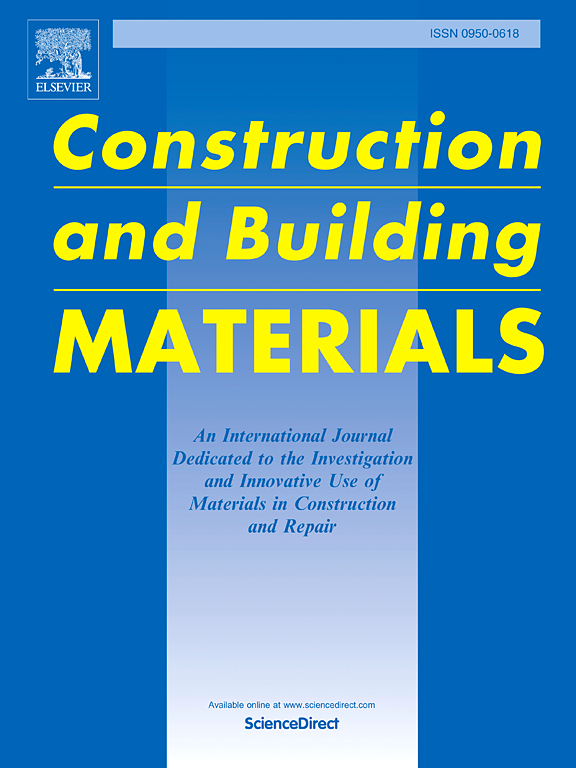 Seismic retrofitting of existing earthen structures using steel platesJuan C. Reyes, Raul Rincon, Luis E. Yamin, Juan F. Correal, Jose G. Martinez, and 3 more authorsConstruction and Building Materials, Jan 2020
Seismic retrofitting of existing earthen structures using steel platesJuan C. Reyes, Raul Rincon, Luis E. Yamin, Juan F. Correal, Jose G. Martinez, and 3 more authorsConstruction and Building Materials, Jan 2020During past earthquakes, existing earthen buildings have suffered severe damage or total collapse leading to fatalities and major economic and cultural losses. Poor mechanical properties, out-of-plane instability, lack of seismic diaphragms, and low strength of the connections between structural elements are the most common problems with these types of vernacular constructions. In this research, a novel retrofitting solution, based on steel plates, is proposed to enhance the seismic performance of earthen structures while protecting the life of the occupants and reducing the expected damages. A comprehensive experimental program is conducted to evaluate the seismic behaviour of earthen structural components under both unretrofitted and retrofitted conditions. The experimental program includes four cyclic tests of the proposed connections between steel plates and walls, five cyclic tests of earthen piers, and three full scale shaking table tests of 3.50 m high  0.60 m thick walls. Observed damage states were related to measured drifts (for cyclic tests) and peak ground accelerations (for dynamic tests). Tests results show that the proposed retrofitting technique substantially increases the stiffness, strength, ductility, and stability of the specimens, which reduces damages and permanent displacements. Retrofitted specimen supported accelerations larger than 1.64g at the roof height without collapse; residual drifts for these demands did not exceed 1.1%.
2018
-
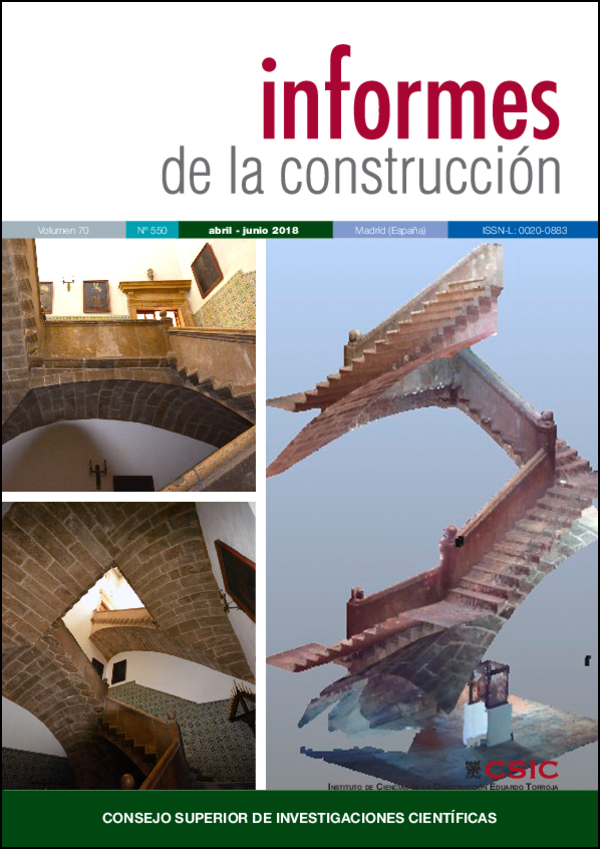 Riesgo sísmico, geotécnico y estructural. El caso de estudio de los edificios San Jerónimo de Yuste en BogotáJ. M. Medina, C. Villate, B. Caicedo, L. Yamin, J. F. Correal, and 2 more authorsInformes de la Construcción, Jun 2018Number: 550
Riesgo sísmico, geotécnico y estructural. El caso de estudio de los edificios San Jerónimo de Yuste en BogotáJ. M. Medina, C. Villate, B. Caicedo, L. Yamin, J. F. Correal, and 2 more authorsInformes de la Construcción, Jun 2018Number: 550San Jerónimo de Yuste buildings are located in Bogotá, on sloping ground, in the foothills of the city. These buildings were built between 2008 and 2011 by the company BIO Construcciones, as part of a broader development project promoted by the family compensation fund Compensar. During the months of May and June 2013 the slope suffered both vertical and horizontal displacements that visibly damaged two of the buildings, which were then evacuated. This paper presents the studies conducted by the Architecture and Engineering Schools at Universidad de los Andes, in order to determine the causes that led to movement, estimate the safety factor and propose interventions at the geotechnical and structural levels which would allow the recovery of the affected buildings.
-
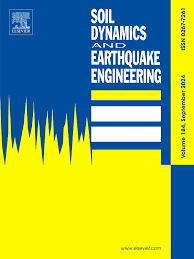 Practical seismic microzonation in complex geological environmentsLuis E. Yamin, Juan C. Reyes, Rodrigo Rueda, Esteban Prada, Raul Rincon, and 3 more authorsSoil Dynamics and Earthquake Engineering, Nov 2018
Practical seismic microzonation in complex geological environmentsLuis E. Yamin, Juan C. Reyes, Rodrigo Rueda, Esteban Prada, Raul Rincon, and 3 more authorsSoil Dynamics and Earthquake Engineering, Nov 2018The seismic design of buildings and infrastructure components requires the estimation of the hazard considering the dynamic response of the soil deposits, which substantially modifies the characteristics of the input motion at the rock basement. Seismic microzonation studies attempt to identify geologic zones of an area of interest with similar seismic hazard at a local scale. This paper presents a methodology to obtain seismic spectral amplification factors within each soil zone characterization considering the main sources of uncertainty. Results are presented in terms of spectral amplification factors for various seismic intensities and soil profile vibration periods. Design soil amplification factors can then be mapped using the measured vibration period of the soil profile at each location and the seismic intensity at bedrock for a given design return period. Response and design spectra may then be estimated at surface level for every location. Results can be easily integrated into probabilistic risk assessment platforms such as CAPRA (www.ecapra.org) for hazard and risk evaluations.
-
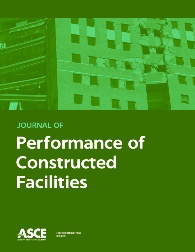 Sudden Collapse of the 27-Story Space Building in Medellin, ColombiaLuis E. Yamin, Juan F. Correal, Juan C. Reyes, Fernando Ramirez, Raul Rincon, and 2 more authorsJournal of Performance of Constructed Facilities, Jun 2018
Sudden Collapse of the 27-Story Space Building in Medellin, ColombiaLuis E. Yamin, Juan F. Correal, Juan C. Reyes, Fernando Ramirez, Raul Rincon, and 2 more authorsJournal of Performance of Constructed Facilities, Jun 2018This article received the Outstanding Journal Paper Award in 2018 from the ASCE Journal of Performance of Constructed Facilities. It also received the “Editor’s Choice” to be featured in the journal homepage. See details of the authors and the award here.
This paper summarizes the different activities undertaken in order to identify the main causes of the collapse of the Space Building, a 27-story reinforced concrete framed building in Medellín, Colombia. Site investigations, field and laboratory tests, and a detailed analytical work including structural analysis under different considerations were carried out. The main cause of the collapse was associated with the deficient structural capacities of the columns of the building in relation to the dead and service loads imposed at the time of the collapse. The occurrence of high differential settlements, the high compressive stresses in main columns, the repair works that were carried out minutes before the collapse, and the probable shear failure of beams and compressive failure of partitions walls during repair works were identified as probable secondary causes and detonating factors of the building collapse. The authors of this investigation considered that if the building had been designed adequately using the Colombian building design codes available at that time, it would not have collapsed, even if most of the aforementioned detonating events had occurred. DOI: 10.1061/(ASCE)CF.1943-5509.0001148. © 2018 American Society of Civil Engineers.
2017
-
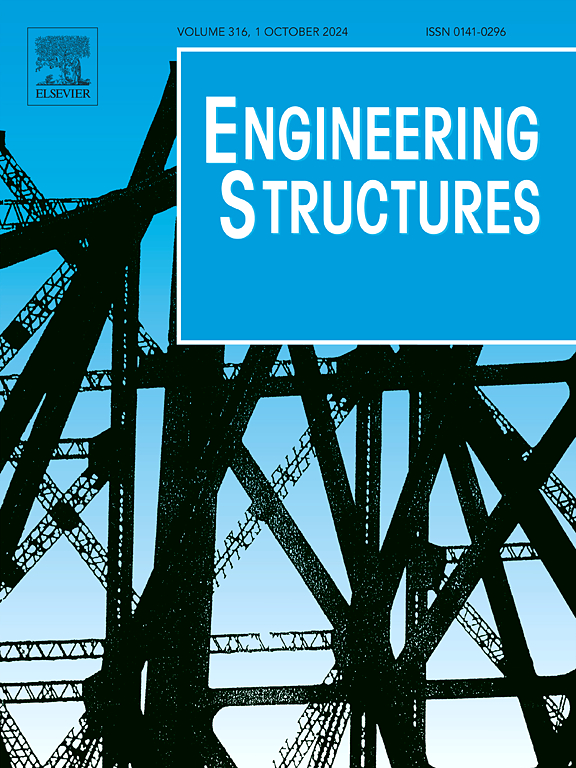 Probabilistic seismic vulnerability assessment of buildings in terms of economic lossesLuis E. Yamin, Alvaro Hurtado, Raul Rincon, Juan F. Dorado, and Juan C. ReyesEngineering Structures, May 2017
Probabilistic seismic vulnerability assessment of buildings in terms of economic lossesLuis E. Yamin, Alvaro Hurtado, Raul Rincon, Juan F. Dorado, and Juan C. ReyesEngineering Structures, May 2017The probabilistic seismic risk assessment in terms of economic losses for building portfolios aims to the estimation of the probability distribution functions (PDF) of economic losses for a set of stochastic events representing the seismic hazard at a particular geographic zone. This paper proposes a methodological approach to evaluate and integrate, in a consistent and rigorous way, the economic losses as a function of the seismic hazard intensity for prototype building constructions. Prototype building models are designed and characterized with a set of reference parameters. By means of 3D structural models, detailed nonlinear response history analyses are performed for a set of seismic records at several increasing intensities. Seismic records are selected to represent particular seismological and geotechnical conditions at the site of analysis. Then, a component-based model is conformed considering structural, non-structural, and content components potentially susceptible to damage. Each component type is assigned a fragility specification for various damage states in terms of costs and times of repair. Using Monte Carlo simulations, the different sources of uncertainty are included in the assessment of the costs and times of repair at different seismic intensities. Uncertainties in the hazard, model response, damage states, and costs and times of repair are considered. Aspects such as geographical variations in the hazard, scale economy, special commercial conditions, minimum or total intervention costs, and business interruption costs are included in the assessment. Finally, the results are represented by means of vulnerability functions for specific building typologies. To illustrate the methodology, a case study is presented in detail for a typical 5-story reinforced concrete moment resisting frame building designed for special seismic code level and located in a typical soft soil deposit of Bogotá, Colombia. Additional results are presented for six (6) different building typologies illustrating variations in results due to different story heights and seismic code levels. The resulting vulnerability functions are compared with equivalent results from other similar methodologies. Conclusions and possible potential applications related to probabilistic risk assessment are summarized.
Journal Articles in Review
-
Patel JM, Rincon R, Padgett JE. (2025). “Parameterized Fragility Assessment of Coastal Structures: Capturing the Influence of Neighboring Structures.” Journal of Structural Engineering, In Review, July 2025.
-
Rincon R, Padgett JE. (2025). “Bias quantification algorithm to measure the compounded effect of submodels’ fidelity on multiscale infrastructure performance estimates.” Reliability Engineering and System Safety, In Review, August 2025.